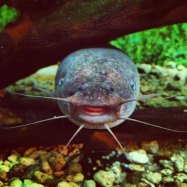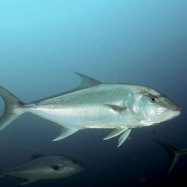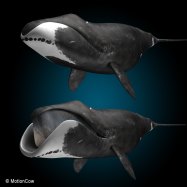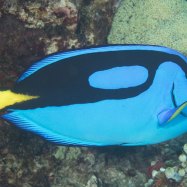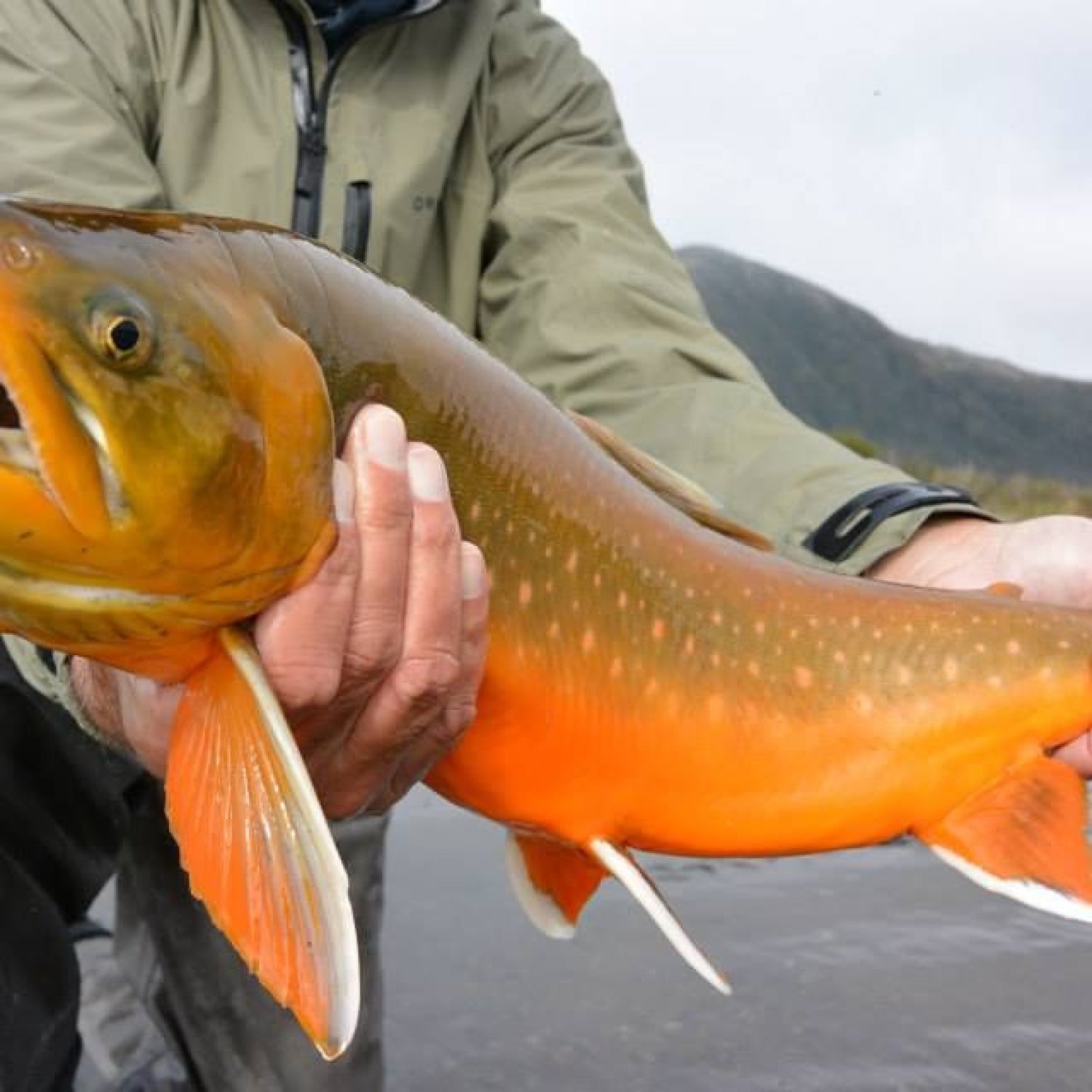
Arctic Char
Up to 70 cm (27.5 inches)
To spot a stunning Arctic Char, head to lakes, rivers, and coastal areas in search of this fish with a streamlined body and striking colors. Growing up to 70 cm, this member of the Salmonidae family is a must-see for any animal enthusiast.
Animal Details Summary:
Common Name: Arctic Char
Kingdom: Animalia
Habitat: Freshwater
The Magnificent Arctic Char: Exploring the Mysteries of the Cold
There is no denying that the Arctic is a harsh and unforgiving environment. With its freezing temperatures, treacherous landscapes, and unpredictable weather patterns, it is not a place that many creatures would choose to call home. But nestled within the icy waters of the Arctic and subarctic regions, there is a truly remarkable fish that defies all odds – the Arctic Char.Scientifically known as Salvelinus alpinus, the Arctic Char is a member of the Animalia kingdom, part of the Chordata phylum, and the Actinopterygii class Arctic Char. It belongs to the Salmoniformes order and the Salmonidae family, making it a close relative of salmon and trout. This remarkable fish is found in freshwater habitats, making its home in the icy lakes, rivers, and coastal areas throughout the Arctic and subarctic regions. But what makes this fish so fascinating? Let's dive deeper and explore the extraordinary characteristics of the Arctic Char.
Surviving the Extremes: Habitat and Distribution
The Arctic Char is a cold-water dwelling fish, perfectly adapted to thrive in the frigid temperatures of the Arctic and subarctic waters. This species has a unique ability to live in both freshwater and saltwater environments, making it highly versatile and increasing its chances of survival.However, the Arctic Char is more commonly found in freshwater habitats, where it spawns and spends most of its life. This includes lakes, rivers, and coastal areas, with some populations also residing in deep offshore waters near the coast. These fish are known to inhabit water bodies that are well-oxygenated, clean, and low in salinity, making them a vital indicator species of healthy aquatic ecosystems.
Geographically, the Arctic Char is widely distributed throughout the Arctic and subarctic regions, including North America, Europe, and Asia Amberjack. They are found in countries such as Canada, Alaska, Russia, Iceland, Norway, and Sweden, among others. This widespread distribution is largely due to the fish's adaptability and ability to survive in a range of different habitats.
A Carnivorous Diet: What do Arctic Char Eat?
As with most fish, the Arctic Char is a carnivorous species, meaning that it primarily feeds on other animals. These fish are opportunistic predators, meaning that they will eat whatever prey is available. Their diet varies depending on their location and the availability of food sources, but their main source of food includes small fish, crustaceans, insects, and plankton.In freshwater habitats, the Arctic Char feeds on a variety of aquatic insects such as mayflies, midges, and caddisflies, as well as small fish like herring, smelt, and sculpin. In coastal areas and offshore waters, they primarily feed on crustaceans such as krill and small fish like capelin and herring. This versatile diet allows the Arctic Char to remain well-nourished, even in the harshest of environments.
The Enigmatic Appearance: Coloration and Body Shape
One of the most striking features of the Arctic Char is its varied coloration, which can range from light pinks and silvers to dark greens and browns. These fish are typically dark on their backs and sides, with a lighter, more vibrant color on their bellies. This serves as a form of camouflage, helping them to blend in with their surroundings and avoid predators.Another notable characteristic of the Arctic Char is its elongated and streamlined body shape. This allows them to swim efficiently through the water, making them swift and agile in their movements. They also have small scales covering their bodies, which provide them with additional protection from the cold and predators.
The Size Factor: How Big can Arctic Char Get?
The average length of an Arctic Char is around 30-50 cm (12-20 inches), but they can grow up to an impressive 70 cm (27.5 inches). This size is considered large for a freshwater fish and is due to the long lifespan of the Arctic Char. These fish can live up to 20 years, allowing them to reach a considerable size over time.The size of Arctic Char can also vary depending on their location and the conditions of their habitat. Fish living in coastal areas and offshore waters tend to be larger than those living in freshwater habitats. This is likely due to the availability of a more abundant food supply and the fact that they do not have to compete for resources with other fish.
The Mystery of Reproduction: Spawning and Breeding Habits
Like other salmonids, the Arctic Char follows anadromous behavior, meaning that they migrate from freshwater to saltwater to spawn and then return to freshwater to complete their life cycle. This incredible journey involves swimming against strong currents and enduring harsh conditions to reach their spawning grounds.The Arctic Char typically spawns in the fall or winter, with the exact timing dependent on their location. They prefer to lay their eggs in shallow, gravelly areas of rivers and streams, with the female using her tail to create a nest or "redd" in the substrate. After laying their eggs, the fish must then stay with them to prevent them from being swept away by the current or eaten by predators.
The Importance of Arctic Char: Conservation and Cultural Significance
The Arctic Char is a vital species in the Arctic and subarctic regions, playing a crucial role in the ecosystem and the livelihoods of many indigenous communities. These fish are not only a source of food but also a cultural and spiritual symbol for many indigenous people.Unfortunately, the Arctic Char population has faced significant threats due to overfishing, habitat loss, and climate change. As a result, many organizations and communities have taken action to conserve and protect these fish. Initiatives such as habitat restoration, sustainable fishing practices, and monitoring populations have shown promising results in supporting the recovery of Arctic Char populations.
In conclusion, the Arctic Char is a remarkable and resilient fish that has adapted to thrive in one of the harshest environments on the planet. Its unique characteristics and vital role in the Arctic ecosystem make it a fascinating and significant species to study and protect. By ensuring the conservation of this species and its habitat, we can ensure the survival of the Arctic Char for future generations to enjoy and admire.

Arctic Char
Animal Details Arctic Char - Scientific Name: Salvelinus alpinus
- Category: Animals A
- Scientific Name: Salvelinus alpinus
- Common Name: Arctic Char
- Kingdom: Animalia
- Phylum: Chordata
- Class: Actinopterygii
- Order: Salmoniformes
- Family: Salmonidae
- Habitat: Freshwater
- Feeding Method: Carnivorous
- Geographical Distribution: Arctic and Subarctic regions
- Country of Origin: North America, Europe, and Asia
- Location: Lakes, rivers, and coastal areas
- Animal Coloration: Varies, but usually dark on the back and sides with a lighter belly
- Body Shape: Streamlined and elongated
- Length: Up to 70 cm (27.5 inches)
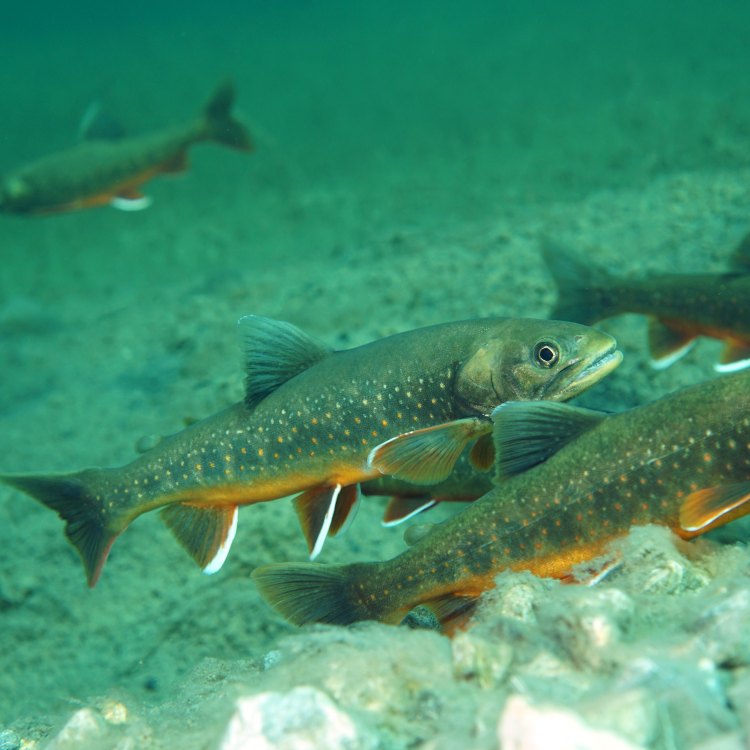
Arctic Char
- Adult Size: Up to 10 kg (22 lbs)
- Average Lifespan: Up to 20 years
- Reproduction: Sexual
- Reproductive Behavior: Anadromous
- Sound or Call: Not known for making sounds or calls
- Migration Pattern: Migratory, moving between freshwater and saltwater habitats
- Social Groups: Solitary, but forms schools during spawning
- Behavior: Aggressive during spawning
- Threats: Overfishing, habitat destruction, climate change
- Conservation Status: Least Concern
- Impact on Ecosystem: Important prey species for larger predators
- Human Use: Sport fishing and commercial fishing
- Distinctive Features: Large dorsal and anal fins, bright red or orange coloration during spawning
- Interesting Facts: Can survive in cold Arctic waters, has evolved multiple subspecies
- Predator: Polar bears, birds of prey, larger fish
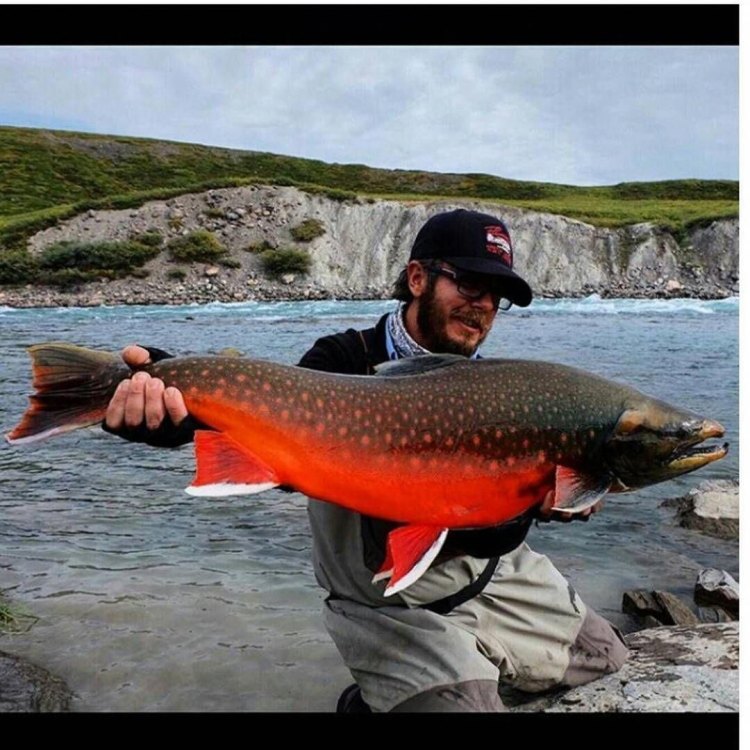
Salvelinus alpinus
The Mysteries and Wonders of the Arctic Char: A Fascinating Fish of the Far North
Deep in the frigid waters of the Arctic circle, there exists a unique and elusive creature known as the Arctic Char. This magnificent fish has long fascinated scientists and fishermen alike with its distinctive features, complex behaviors, and adaptations to extreme environments.The Arctic Char (Salvelinus alpinus) is a member of the Salmonidae family, which includes salmon, trout, and grayling. It can survive in some of the coldest waters on Earth, and uniquely, it has evolved into multiple subspecies, each specially adapted to its respective environment PeaceOfAnimals.Com. From the alpine lakes and rivers of the Arctic to the deep ocean waters of the Atlantic and Pacific, the Arctic Char can be found in a variety of habitats, each with its own distinct population.
Adult Arctic Char can grow up to an impressive 10 kg (22 lbs) in size and live up to 20 years, making them one of the largest and longest-living freshwater fish in the world. Despite their size, these fish are relatively slow-growing, taking several years to reach maturity, with females generally growing larger than males.
Reproduction in Arctic Char is sexual, with females laying eggs and males fertilizing them. However, what sets these fish apart is their unique reproductive behavior. They are anadromous, meaning they migrate between freshwater and saltwater environments to spawn. This behavior is commonly seen in other salmonids, such as salmon and trout, but is unusual for a non-salmonid fish like the Arctic Char.
During spawning, which typically occurs in the late summer or fall, male Arctic Char become territorial and aggressive, fiercely defending their chosen spawning grounds. They also develop bright red or orange coloration, making this a spectacular event to witness Australian Shepherd Mix. The females lay their eggs in gravel beds, and the males fertilize them before the females cover them with gravel to protect them.
One of the most interesting facts about the Arctic Char is its ability to survive in freezing cold waters. It has evolved special adaptations to thrive in these extreme environments, such as antifreeze proteins in its blood and a high oxygen-carrying capacity in its blood cells. These adaptations allow it to live in waters with temperatures as low as -4 degrees Celsius.
Arctic Char are also known for their distinctive features, such as their large dorsal and anal fins, which give them an almost prehistoric appearance. These fins, along with their streamlined body shape, allow them to navigate through strong currents and maintain their stability while swimming.
While Arctic Char are generally solitary fish, they do form schools during spawning, where they can be found in large numbers. This spawning behavior is important not only for the survival of the species but also for the ecosystem as a whole. As a key prey species, Arctic Char support a diverse and complex food web in their habitats, making them crucial to the health of Arctic environments.
Unfortunately, like many other fish species, Arctic Char are facing threats to their survival. Overfishing, habitat destruction, and climate change are the major factors that have led to a decline in their population. This has resulted in the International Union for Conservation of Nature (IUCN) listing them as a species of Least Concern, meaning they are currently not at risk of extinction. However, continued efforts are needed to ensure their long-term survival.
Arctic Char face various predators in their habitat, including polar bears, birds of prey, and larger fish. Their natural coloration, a silvery gray, helps them blend in with the snow and ice, making them difficult for predators to spot. However, during spawning when they develop their bright colors, they become more vulnerable to predators.
As an important prey species for larger predators, the Arctic Char has a significant impact on the ecosystem. A decline in their population can have consequences for other species, including humans. Arctic Char serves as a vital source of food for many indigenous communities, and they are also targeted by sport fishermen and commercial fisheries. Therefore, it is crucial to manage their populations sustainably to protect their role in the ecosystem while also supporting local economies.
In recent years, the Arctic Char has also caught the attention of researchers and fish enthusiasts due to its potential as a model species for understanding the effects of climate change on fish populations. As these fish are already adapted to living in cold waters, they can provide valuable insights into how other species may respond to a changing climate.
In conclusion, the Arctic Char is a unique and fascinating fish of the far north, with its distinctive features, complex behaviors, and adaptations to extreme environments. From its anadromous reproductive behavior to its antifreeze blood proteins, this fish continues to captivate and intrigue scientists and non-scientists alike. As we continue to uncover the wonders of this mysterious creature, we must also work towards protecting its populations and the delicate ecosystems they call home.

The Magnificent Arctic Char: Exploring the Mysteries of the Cold
Disclaimer: The content provided is for informational purposes only. We cannot guarantee the accuracy of the information on this page 100%. All information provided here may change without prior notice.




